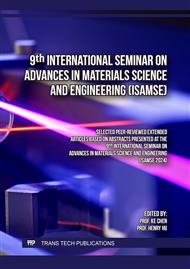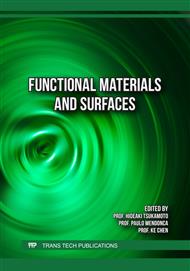p.33
p.41
p.49
p.61
p.69
p.79
p.93
p.99
p.105
Research on Corrosion Resistance of Plasma Nitriding Modified Layer on Stainless Steel Metal Bipolar Plate
Abstract:
The acidic environment and polarization in proton exchange membrane fuel cells (PEMFC) result in severe electrochemical corrosion issues for the bipolar plates of metal-based fuel cells. AISI 304 stainless steel is studied in this paper as the bipolar substrate and treated with plasma nitriding to improve its corrosion resistance performance. The influence of process parameters on the growth pattern of nitrided layers was discussed, and the microstructure and properties of modified layers were systematically studied. Results show that an expanded austenite nitride layer is obtained when the nitriding temperature is under 450°C, which has good corrosion resistance. When CrN precipitates at higher nitriding temperatures, the corrosion resistance of the nitride layer sharply decreases. The presence of valence states of N and Cr atoms in the nitrided layer determines the corrosion resistance of nitrided stainless steel samples.
Info:
Periodical:
Pages:
99-103
Citation:
Online since:
December 2024
Authors:
Price:
Сopyright:
© 2024 Trans Tech Publications Ltd. All Rights Reserved
Share:
Citation:



